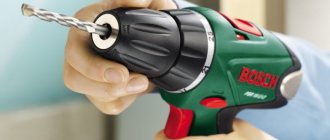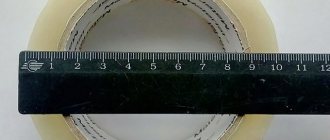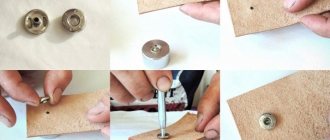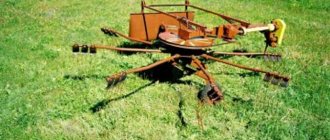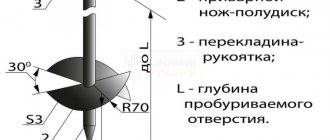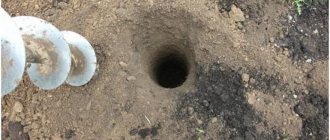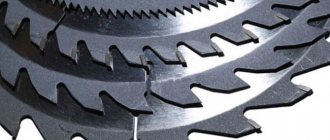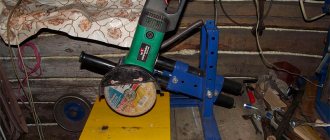Sharpening a hacksaw
Like any other tool, a hacksaw will work well if it is sharp.
With frequent use, the question of sharpening a hacksaw for wood very soon arises. A hand saw for wood becomes less sharp over time; the teeth wear down, becoming rounder on the sides and in front of the edge. Therefore, it becomes more difficult to operate the saw. To restore the previous sharpness of the teeth, it is worth sharpening them. Please note that before and after sharpening, the teeth must have their original height and angle pitch.
It is also worth considering the fact that not every hacksaw can be sharpened. For example, a tool that has small teeth should not be sharpened. In addition, hardened steel teeth cannot be sharpened. A large wood hacksaw lends itself best to sharpening.
Before you start sharpening, you should separate the teeth. To ensure free movement along the workpiece, as well as to avoid pinching the tool, the teeth must be moved apart smoothly as they deepen.
The alignment of the teeth must be bent in different directions to a specific distance. After this, the width of the cut will increase and will have a larger width compared to the thickness of the teeth. There are gaps on the sides. Upon completion of the layout, the hacksaw will easily move back and forth, and the blade will not touch the surface of the cut, as a result of which the master will freely remove the wood with each layer.
When setting, it is worth considering the fact that as the width of the teeth increases, the cut will widen. Therefore, you will avoid the hacksaw getting jammed. However, this does not mean at all that if the teeth are set excessively (increasing the width), a wide cut will be obtained; on the contrary, the teeth will tear the wood and the work will become harder. The optimal width of the teeth is one and a half to two times greater than the thickness of the hacksaw blade. For this reason, to cut raw wood, the teeth should be set aside by 0.5 - 1 mm, and dry wood - less than 0.5 mm.
A special tool called a setting tool will help you bend the teeth. This is a small metal or wooden plate with a small slot, the width of which is greater than the thickness of the hacksaw. Often the wiring is equipped with an adjusting screw, with which you can achieve an even bending pitch of the teeth.
Wiring procedure:
- clamp the saw in a vise so that only one teeth peeks out
- fix the vice on a convenient flat surface, for example, on a table
- bend the teeth using an adjustable device in the opposite direction
- do not bend the teeth completely, otherwise they will break
- at the end of the setting, you need to check that the teeth are at the same distance and do not look out.
Sharpening a tool can be called a real art, for this reason it is worth following certain rules:
- securely fix the hacksaw. The blade must be secured in a vice or other wooden device that is installed in a well-lit place and on a stable surface. High-quality sharpening will not work on your knees, chair or brick.
- use high quality tools. Don't save money by buying cheap tools. You should definitely buy a quality file
- For long service life of a hacksaw, it must be cleaned with a wire brush and rubbed with charcoal. This is necessary so that the hacksaw does not clog or become dull.
- The handle of the hacksaw should be held in the right hand, and the end should be supported with the left, pointing the file at the teeth. It is necessary to press the teeth smoothly, pointing the file in one direction. When returning the file, try not to touch the teeth.
- you need to try to remove the metal from the edge of the teeth evenly. For convenience, you can count the number of movements; for each tooth it should be the same
- A file that has a velvet notch will help you get rid of burrs from your teeth. The notches on the side edges of the hacksaw must be removed using a whetstone.
At the end of sharpening, you should definitely check the quality of sharpening and the sharpness of the teeth. A well-sharpened edge does not shine.
How to set a saw and what it is
Sharpening a hacksaw is not a complicated procedure that begins with a process called setting the teeth. This procedure is carried out with one simple goal - to provide free movement of the blade when working with the tool. The lack of routing leads to the fact that the tool will get stuck in the thickness of the workpiece being cut, which will cause inconvenience in work.
Setting the teeth of a hacksaw is a procedure that involves straightening the teeth in different directions. The main thing is that each tooth is bent the same amount as the previous one. The greater the deviation of the tooth from the plane of the blade, the greater the width of the cut. The greater the width of the cut, the higher the process of removing chips from the cut, which means the faster the useful work is done.
The possibility of jamming of the blade depends on the width of the teeth. The greater the width of the routing, the less likely it is that the blade will jam inside the workpiece being cut. Not many people know what the tooth spread should be. However, this parameter must be taken into account, since the quality of the tool’s work depends on it. The size of the tooth set primarily depends on the thickness of the steel blade. This parameter is usually from 0.5 to 2 mm. It all also depends on the type of wood (dry or wet) with which you plan to work:
- For raw wood, the deflection value should be in the range from 0.5 to 1 mm. The thicker the canvas, the greater the bend should be
- For dry wood, the deflection value is from 0.3 to 0.5 mm
To determine the size of the wiring, a special device is used - a template, which you can make yourself from a piece of timber. A photo of such a device is shown below.
Number 1 shows the template, 2 is the tooth set value, and 3 is the hacksaw blade.
When you know the amount by which you need to set the teeth, you can get down to business. To implement the action, special devices are used. It is not necessary to use these devices, as a regular screwdriver with a wide blade will do. The disadvantage of a special device for setting the teeth of a hacksaw is that the price of such a device in the form of pliers is quite high.
Instead of special pliers, you can use adjustable plates. This tool is designed with manual adjustment and stop. The straightening process begins with the fact that the blade needs to be fixed in the jaws of the vice, and then get down to business. First you need to go along one side, and then repeat the procedure on the other. Moreover, you need to bend the teeth not at the cutter itself (the base or sharp part), but from the middle.
This is interesting!
As soon as the teeth are straightened to the same distance, you will also need to carry out the procedure for leveling the height of the cutting parts. To identify which teeth have a greater height in relation to others, you should press the blade with the cutting part to a sheet of paper. An imprint will be displayed on a piece of paper, from which it is not difficult to identify which teeth need to be shortened. To shorten them, you can use a flat file.
Saw layout
Tooth setting pliers
Tooth setting pliers are a good tool. Its cost can be compared with the price of a hand saw: 300-500 rubles. It is very convenient to use; the saw tooth moves to the side as needed.
Wiring for a hacksaw. It’s also a good thing and inexpensive—the average price is around 100 rubles. The design is simple: several slots and an adjustable angle gauge. The tooth is inserted into a slot of suitable size, and the setting is carried out by applying pressure to the handle. The set protractor ensures uniform distribution.
Wiring for hacksaw
You don’t have either one at home, but don’t want to run to the store? Then you can use the old-fashioned method - it has been used since the beginning of time. All you need is an ax and some dexterity so as not to damage your hands (for people who are not good with tools, do not use this method - it is dangerous!).
The technology is simple : the blade is inserted between two teeth and by turning the ax, the teeth bend to the sides.
Setting teeth with an ax
The saw can also be routed using a self-tapping screw. It's more secure. For this you need a long screw - to make it more convenient to hold. It needs a little modification before work. You need to grind off its cap a little on one side to make it flat. This is necessary so that when it is applied to the tooth, it does not slip off and deform the latter.
The hacksaw should lie flat on soft wood (pine, spruce). Holding the self-tapping screw by the leg, apply the head to the tooth and hit it with a hammer. The tooth bends. The operation is performed through the tooth. Afterwards, the saw blade is turned over and the operation is repeated in the same way.
Setting teeth using a self-tapping screw
Sharpening a hacksaw for wood with your own hands
If the instructions for the blade do not indicate the exact parameters, the layout is done according to the general rules: The width of the cutting edge overhang should be 1.5 - 2 times the thickness of the blade. Wider routing is done for wet wood, or in the case of cutting along the grain. If, when processing such wood, the width of the teeth is small, the blade will jam in the cut.
On the contrary, with a wide spread, it will be inconvenient to process normal wood across the grain. The cut will be uneven and you will have to put more effort into cutting the saw.
There are convenient tools for setting teeth, with which you can straighten a long blade in a few minutes. However, such pliers are expensive.
Most DIYers use traditional adjustable plates the old fashioned way, with manual adjustment and stop.
The blade is clamped in a vice, or pressed against a workbench using a long block and clamps. The teeth are aligned one after another, first one side, then the other.
Then you need to level the height of the cutting edges. To do this, place a sheet of paper on a soft, flat board, and vertically press the blade against it (with the cutting part). The imprint will show which teeth have different heights.
Sharpening a hacksaw on wood with your own hands video from the master handyMEN
It is advisable to adjust the size to one level, otherwise you will have to put more effort when cutting. Of course, if one or two teeth are ground down more, it is unreasonable to align the rest to this height. If most of the incisors are discordant, it is necessary to equalize their sizes as much as possible.
After leveling, you can start sharpening the hacksaw on wood. The easiest to maintain is a hacksaw with a large tooth. For sharpening, you can use a finely cut file and a regular vice.
Why and when to sharpen
The tool in question is subjected to various loads during operation, which leads to dulling of the teeth. If you cut with a saw that has dull teeth, the result will be much less effective compared to a sharp one. In addition, using a saw with dull teeth is not recommended for the following reasons:
Needs sharpening
- Reduced tool performance. Not only the master’s strength will be wasted, but also his time.
- Reduced accuracy of work. It is impossible to cut wood materials smoothly with a hacksaw with blunt teeth, much less do it accurately.
- Danger of using the tool. During the work, the saw will get stuck, jam, and move off the cutting line, so such work can be dangerous for the master.
A sharp hacksaw is not only easier to work with, but also much safer.
To determine that the time has come to sharpen the wood hacksaw blade, you should pay attention to the following factors:
- The canvas makes a characteristic dull sound. If a master often uses a hacksaw, then it will not be difficult for him to identify such a sound.
- The tips of the teeth are rounded.
- The file, when trying to cut wood, refuses to perform its task.
These factors indicate that it’s time to sharpen your wood hacksaw yourself. But before you take up the file, you should determine whether these links can be sharpened.
Divorce Devices
For divorce, there are special divorce devices that are distinguished by great variety and functionality. Today, many experts appreciate the KEDR saw setting device for its reliability, simplicity and ease of use, as well as its low price.
It is a manual machine that provides a layout accuracy of 5 microns. The machine is equipped with special support stands to facilitate its use. The presence of a dial indicator on the machine maximizes the accuracy of the layout.
The carefully thought-out design of the KEDR adjusting device ensures productive and efficient use of the entire resource of the saw specified by the manufacturer. It can be easily adjusted to the required setting parameters to ensure the optimal cutting width. As a result, you can get by with less engine power, since the friction forces during sawing are reduced.
This setting machine easily and simply provides setting with minimum sawing resistance.
Each type of wood has a characteristic hardness. Depending on this characteristic, the pitch of the saw teeth should vary. For hard breeds the step should be smaller.
Despite the obvious advantages of this machine over other devices of similar purposes, it has an affordable price, which also contributes to its increasing recognition throughout Russia.
The machine for setting up band saws “KEDR” has the following technical characteristics:
- overall dimensions – 28.5x12.1x36 cm;
- Width of cutting saws – up to 5 cm;
- the pitch of the saw blades is 2.2 cm;
- weighing 5.2 kg.
Let us also remind you about simpler devices for setting up hacksaw saws. Their use for band saws is associated with low accuracy and high labor intensity. Their use is justified only in the absence of special devices.
Wiring
Turning process step by step
When manually sharpening with a file, it is easier to control the material removal and set the correct edge angles. The blade must be clamped in a miter box or vice, ensuring that the teeth protrude above the jaws by about 30–35 mm. Setting is done before sharpening for three reasons:
- so that the cutting edges are not subsequently damaged;
- so that a slightly stronger spread is ensured in advance, which is compensated by removing a certain amount of metal from the teeth;
- so that the direction of the cutting edges and the teeth set are uniform.
The most important rule for sharpening wood hacksaws is: the tooth must have a flat side on the side in which it was set. Thus, the cutting edges of adjacent set teeth are directed towards each other, that is, inside the channel formed by the set.
After clamping the blade, it is necessary to clarify the sharpening angle of the cutting edges. Ideally, it should be determined by the hardness of the wood being processed, but since a hacksaw is used for sawing various types of wood, a universal value of 60–75° from the plane of the tooth is set for all types of profiles. There is a certain difficulty in determining the sharpening angle relative to the plane of the blade in order to confidently control the position of the tool. This can be done using a flat metal plate, choosing the least worn tooth as a standard; usually this can be found closer to the handle.
When sharpening, you need to process those teeth that have their edges facing you. Maintaining the correct angle between the edge of the file and the blade, and also slightly tilting the file towards the edges, you need to remove 2-3 material from the cutting edges, applying pressure while moving away from you. After each pass, you need to ensure that the metal is removed over the entire surface of the edge, adjusting the position of the file if necessary. To ensure uniform sharpening, the number of file movements on each tooth must be the same. A good result of sharpening is considered to be uniform lightening of the blade descent over the entire area.
Sharpening a blade on an abrasive wheel is more difficult due to the fact that the blade does not have a stop. However, with proper skill, you can achieve accurate removal of metal from both sides of each tooth. As with hand sharpening, the movement of the cutting tool should be directed towards the flat part of the tooth, thus the entire blade is sharpened twice with a revolution.
How to determine when a hacksaw needs sharpening?
People with extensive experience simply determine this moment by the sound made by the equipment during operation, also by the change in the color of the teeth. Newcomers need to pay attention to the following signs:
- working with a hacksaw becomes difficult and requires enormous physical effort;
- it becomes very difficult to make a perpendicular cut of wood;
- it becomes difficult to hold the blade along the mowing line during operation, it begins to deviate in different directions;
- The hacksaw blade often jams.
Wiring
Before restoring the sharpness of the saw, it is necessary to adjust the teeth, in other words, move them apart. Setting is the installation of cutting teeth at a certain angle relative to the blade and each other. If you look at the set saw, you can see that they, alternating, deviate to the right and to the left from the blade itself. This configuration gives the hacksaw freedom in the deepest cuts. It doesn’t get stuck because it doesn’t touch the walls with its entire plane.
To set the correct angle for each tooth “by eye”, you need a lot of experience, which not every carpenter has. It comes after many 10s of sharpened saws. For the least experienced carpenters, there is a tool called a setting tool. A simpler version is a flat iron plate with a slot. A hacksaw is inserted into this gap with the smallest gap, into the tension.
The wiring process looks like this:
- Secure the hacksaw in a vice like this. It is necessary to ensure that the teeth protrude 2 cm above the jaws.
- The teeth are clamped in the groove and then bent in the middle.
- First you need to bend all the even teeth in one direction, then bend the odd ones in the opposite direction.
- At the end, you can spread the jaws of the vice according to the calculated width of the spread and try to pass the saw between them.
- An excessively bent tooth will hit the vice. Use pliers to bend it a little further.
Sharpen, do not dull a hacksaw: instructions for sharpening a hacksaw for wood
Despite the abundance of chainsaws, circular saws, grinders and other automatic cutting tools, the ordinary hand saw is still popular.
While it has long been replaced by more advanced saws in production and logging, the good old toothy blade remains in garages and dachas. A wood hacksaw can last for decades if it is sharpened in a timely manner and correctly.
Even people who regularly work with their hands make mistakes in this process.
Need for sharpening
The most obvious advantage of sharpness is the speed of sawing. When working in the country, this is even more important than in the workshop, since you often have to work in cramped conditions, standing in an awkward position. A poorly sharpened blade gets stuck in wood, especially raw wood. In addition, there is a risk that the canvas will break and injure the worker.
The practical benefits of spiciness include:
- Accuracy of the cuts performed.
- Longer service life of the canvas.
- Savings on replacing hacksaws.
- High productivity of carpentry work.
Determining the right moment
Without experience, people often go from one extreme to another and either sharpen the saw every few days or once a year. Determining the need for sharpening by time is the wrong approach.
There are a number of signs that indicate that the teeth are dull:
- The blade regularly gets stuck in the wood.
- When sawing, the sound changes, it becomes more “dull”.
- The shade of the teeth changes.
- The resistance of the material increases significantly.
- The ends of the teeth are noticeably rounded.
- The blade moves away from the cutting line.
Hardened teeth cannot be sharpened. They are easy to distinguish: they are blackish with a slight blue tint.
Sharpening instructions
First you need to prepare the equipment necessary for work:
- Set of files.
- Sandpaper.
Without a basic set, it’s basically impossible to sharpen it.
To make sharpening better, you can prepare additional tools:
- A device that allows you to mount the saw at the required angle.
- Locksmith's hammer.
Wiring
Before returning the sharpness to the saw, you need to adjust the teeth, that is, move them apart. Setting is the installation of cutting teeth at a certain angle relative to the blade and each other.
If you look at the set saw, you can see that they, alternating, deviate to the right and left from the blade plate itself. This configuration gives the hacksaw freedom to make deep cuts.
It doesn’t get stuck because it doesn’t touch the walls with its entire plane.
The distance between the set teeth should be one and a half or two times the thickness of the hacksaw. They are produced no thicker than 1.5-2 millimeters, therefore, the cutting protrusions need to be set at 0.25-0.5 mm for sawing dry and hard wood; for damp or soft wood you need to bend it by 0.5-1 mm.
To set the correct angle for each tooth “by eye”, you need solid experience, which not every carpenter has. It comes after many dozens of sharpened saws. For less experienced carpenters, there is a tool called a setting tool. Its most primitive version is a flat steel plate with a slot. A hacksaw is inserted into this gap with a minimum gap, under tension.
The wiring process looks like this:
- Secure the hacksaw in a vice like this. It is necessary to ensure that the teeth protrude 2 cm above the jaws.
- The teeth are clamped in the groove and then bent in the middle.
- First you need to bend all the even teeth in one direction, then bend the odd ones in the opposite direction.
- At the end, you can spread the jaws of the vice according to the calculated width of the spread and try to pass the saw between them.
- An excessively bent tooth will hit the vice. Use pliers to bend it a little further.
Adjustment of teeth height
All cutting lugs must be the same size to ensure that sawing performance is not compromised. Longer teeth experience greater stress and wear out faster, while shorter teeth do not even touch the wood.
Pulling the canvas becomes jerky, uneven, and more effort is wasted. The accuracy of the cut deteriorates, the cut surface becomes rougher.
Adjustments are made before sharpening begins. To make sure that none of the teeth protrude, you can do this: press the canvas against a sheet of paper placed on the table.
The tops of the teeth will be imprinted on the sheet, and the gaps in this pattern will allow you to adjust their height. To do this, hold the saw in a bench vise and use a file to file down the teeth that are too long.
Direct sharpening
To return the teeth to their former sharpness, a whetstone used to sharpen kitchen knives is not suitable. You need a special tool: a file with a triangular cross-section or a needle file. It is very good if you have several files with different sections and cut pitches: this will allow you to process each tooth perfectly.
Sharpening stages:
- Hold the file by the handle with one hand and place the other on the end of the tool.
- Decide on the sharpening angle. Usually it is 15-30 °. You can determine it by eye, with a protractor, or use simple equipment. Shape a block of wood into an isosceles triangle with angles of 90, 60 and 30 degrees, then use it as a measuring stick.
- Sharpen the left cutting edges of the even (farthest from you) teeth. Each requires an equal number of file passes to remove the same amount of chips. The pressure on the tool should be equal.
- Turn the hacksaw over to the other side, then sharpen the left edges of the even-numbered teeth again.
- Sharpen the tops of the teeth.
- Do not forget to control the sharpening angle using a whetstone.
The process seems very simple, albeit monotonous, but there are a number of nuances:
- The saw must be secured very tightly in the vise for safety reasons. Do not be afraid to damage the metal of the blade with strong compression.
- The work area should be well lit to make it easier to determine angles and sharpness.
- The metal is removed only when the file moves away from the carpenter.
- The more dull the saw, the larger the notches on the file can be, but to fine-tune the teeth you should always use a file with small notches.
- When fixing the tool in a vice, push it between the jaws as deep as possible. To prevent the hacksaw from swinging outward, only the teeth should remain.
- During the work process, there will inevitably be burrs on the sharpened edges. To remove them, just rub the metal with a fine-grained abrasive (sandpaper).
- To check the quality, you need to carefully examine the teeth in the light. They should shine.
Sharpening quality improvements
How do you sharpen a hacksaw for wood?
On your own From a master
The classic option that anyone can use was discussed above. There is a way to make the sharpening process more efficient and easier.
When using a multi-axis vice with a rotating frame, you can fix the blade so that you only have to move the file in the horizontal plane.
You can purchase a special sharpening device at a hardware store. It is attached to the workbench with a clamp and the hacksaw is clamped in it at angles of 90 and 45 degrees relative to the working surface. After installation it will be much easier to use the file.
Conclusion
I tested various sharpening methods in my own experience. In the garage there was an old wood saw that had not been sharpened for probably twenty years. It served as a testing ground for me. I won’t say that the saw is like new, but it can work in the country without any problems.
There is nothing difficult about sharpening saws yourself; you just need to get your hands used to it. My father once taught me how to sharpen saws, but he did everything in a simple way, without fixing the blade in a vice. This is the wrong approach. You should always clamp the saw in a vice. Firstly, it’s safer, and secondly, it’s easier.
Sharpening a hacksaw for wood with your own hands
If the instructions for the blade do not indicate the exact parameters, the layout is done according to the general rules: The width of the cutting edge overhang should be 1.5 - 2 times the thickness of the blade. Wider routing is done for wet wood, or in the case of cutting along the grain. If, when processing such wood, the width of the teeth is small, the blade will jam in the cut.
On the contrary, with a wide spread, it will be inconvenient to process normal wood across the grain. The cut will be uneven and you will have to put more effort into cutting the saw.
There are convenient tools for setting teeth, with which you can straighten a long blade in a few minutes. However, such pliers are expensive.
Most DIYers use traditional adjustable plates the old fashioned way, with manual adjustment and stop.
The blade is clamped in a vice, or pressed against a workbench using a long block and clamps. The teeth are aligned one after another, first one side, then the other.
Then you need to level the height of the cutting edges. To do this, place a sheet of paper on a soft, flat board, and vertically press the blade against it (with the cutting part). The imprint will show which teeth have different heights.
Sharpening a hacksaw on wood with your own hands video from the master handyMEN
It is advisable to adjust the size to one level, otherwise you will have to put more effort when cutting. Of course, if one or two teeth are ground down more, it is unreasonable to align the rest to this height. If most of the incisors are discordant, it is necessary to equalize their sizes as much as possible.
After leveling, you can start sharpening the hacksaw on wood. The easiest to maintain is a hacksaw with a large tooth. For sharpening, you can use a finely cut file and a regular vice.
Why and when to sharpen
The tool in question is subjected to various loads during operation, which leads to dulling of the teeth. If you cut with a saw that has dull teeth, the result will be much less effective compared to a sharp one. In addition, using a saw with dull teeth is not recommended for the following reasons:
Needs sharpening
- Reduced tool performance. Not only the master’s strength will be wasted, but also his time.
- Reduced accuracy of work. It is impossible to cut wood materials smoothly with a hacksaw with blunt teeth, much less do it accurately.
- Danger of using the tool. During the work, the saw will get stuck, jam, and move off the cutting line, so such work can be dangerous for the master.
A sharp hacksaw is not only easier to work with, but also much safer.
To determine that the time has come to sharpen the wood hacksaw blade, you should pay attention to the following factors:
- The canvas makes a characteristic dull sound. If a master often uses a hacksaw, then it will not be difficult for him to identify such a sound.
- The tips of the teeth are rounded.
- The file, when trying to cut wood, refuses to perform its task.
These factors indicate that it’s time to sharpen your wood hacksaw yourself. But before you take up the file, you should determine whether these links can be sharpened.
How to sharpen a hacksaw
When working with wood in various ways, a tool such as a hacksaw is actively used. Over time, the cutting surface of the tool wears out, and the process of sawing wood becomes more and more difficult. Wear of the working edge is as follows:
- the pointed tops of the teeth are rounded;
- their side cutting edges become dull.
As a result, the tool loses functionality and needs to be sharpened.
How to determine when a hacksaw needs sharpening?
People with extensive experience can easily determine this moment by the sound made by the tool during operation, as well as by the change in color of the teeth. Beginners need to pay attention to the following signs:
- working with a hacksaw becomes difficult and requires great physical effort;
- it becomes very difficult to make perpendicular cuts in wood;
- it becomes difficult to hold the canvas along the line during operation, it begins to deviate in different directions;
- The hacksaw blade often jams.
Teeth setting
The setting of the saw is the deviation of the tops of the teeth from the plane of the blade. The teeth, one after another, are deflected in different directions: odd teeth in one direction, even teeth in the other.
You need to know that the quality of the wiring has a strong influence on the sawing process. Therefore, all teeth must be bent in different directions alternately by the same amount, otherwise:
- if some teeth are deflected at a greater angle than the rest, they will interfere with the movement of the tool and wear out faster;
- if the deviation is less than necessary, then the width of the cut will not allow the blade to move freely.
To set the saw teeth, a special tool is used - a setter. The simplest wiring looks like a small metal plate with a handle. It has a slot, the width of which is slightly greater than the thickness of the hacksaw blade. The teeth are set as follows:
- the saw is clamped in a vice so that the jaws of the vice end at the base of the teeth;
- then the teeth are alternately placed in the setting slot and, bending in the middle part, are moved to the side at a given angle;
- Periodically, the quality of the wiring is checked visually or using a caliper;
- To check the quality of the setting, the jaws of the vice are moved apart to the width of the setting and the saw is pulled between them (in this case, excessive bending of any tooth will not allow the blade to move freely between the jaws).
Checking the height of the hacksaw teeth
Therefore, before sharpening the hacksaw, you need to check the height of the cutting elements. This is done as follows:
- Place a sheet of paper on a flat and smooth surface and press the saw tightly against it;
- the profile is clearly imprinted on the paper, and the teeth become clearly visible;
- if higher teeth are found than the rest, then the saw is clamped in a vice and they are shortened to the desired height using a flat file.
Sharpening a hacksaw
For sharpening you will need the following tool:
- vice;
- hammer;
- calipers;
- pliers;
- emery block;
- sandpaper.
You should also have the following types of files in your arsenal:
- flat and diamond-shaped with a medium-sized notch;
- triangular file;
- triangular with velvet notch;
- needle files with notches of different calibers.
For sharpening, a special device is used that allows you to fix the blade at angles of 45 and 90 degrees. If you need to sharpen a cross saw, proceed as follows:
- the canvas is fixed at an angle of 45 degrees;
- sharpening is carried out with a triangular file with an apex angle of 60 degrees;
- the file is directed onto the hacksaw tooth at an angle of 60 to 75 degrees;
- first, with several movements of the file away from you, the left edges of the odd teeth are processed;
- After this, the hacksaw is turned over and the left edges of the even teeth are processed.
When sharpening a longitudinal hacksaw, proceed as follows:
- the canvas is fixed vertically;
- for sharpening, a rhombic file with a fine notch is used (needles can be used);
- during sharpening, the file is directed strictly parallel to the table;
- otherwise the process is similar to the previous one.
Burrs that appear on the edges of the teeth must be removed using an emery block or a file with a velvet cut.
The process of sharpening a saw for the first time is quite difficult, so it is better to carry it out in complete silence and with maximum concentration. It’s worth doing this a few times, and then things will become habitual and go “like clockwork.”
Setting up band saws
The process of setting is considered to be an operation associated with bending the saw teeth in different directions in order to reduce the friction of the saw band on the side surfaces of the cut and prevent it from being pinched.
For free movement of the blade in wood, it is necessary to ensure a cutting width that exceeds the thickness of the blade by at least 30-60%. Wiring is divided into several types, and they do not yet have established names, since saw manufacturers call them differently.
The standard setting is characterized by alternating bending of the teeth on different sides.
Standard wiring diagram
When stripping, the teeth of the saw blade are divided into three, two of which are bent in different directions, and the third remains in place.
Stripping wiring diagram
It is mainly used when working with hard wood. The trapezoidal shape of every third tooth remaining in the center of the saw sets the direction of the entire saw blade.
The most difficult to perform is the wavy setting, since each subsequent tooth in a half-wave is bent by an increasingly increasing amount.
Wavy wiring diagram
With any type of setting, the tooth is not bent from the base, but with an indentation from it by 33-67% of the height of the tooth. Despite the fact that each manufacturer dictates its own requirements regarding indicators related to divorce, all of them do not go beyond 0.3-0.7 mm.
It is generally accepted to cut trees with soft wood with band saws that have a large gap, and with hard wood - a small gap. But in any case, the spread should be such that sawing occurs without the formation of a cut wedge in the center.
When set, all teeth must be bent by the same amount with a permissible error of up to 0.1 mm. If the setting is not the same, the saw will be pulled in the direction of the larger setting.
Teeth setting
The teeth deviate from the plane of the blade in a checkerboard pattern, for example, all even ones to the left, all odd ones to the right. Only very experienced carpenters are able to position saws on wood “by eye.” This skill comes after several hundred diluted saws. Less experienced craftsmen are better off using a special tool - a setting tool. The simplest version of the tool is a flat plate made of durable metal with a slot into which the blade fits tightly, with minimal clearance. The saw blade should be clamped in a bench vice. The teeth should protrude slightly from the jaws. The teeth, one after another, are clamped into the groove of the plate tool and bent in the middle part. The wiring angle must be constantly monitored. First, bend all the even-numbered teeth in one direction, then all the odd-numbered teeth in the other. Once the wiring is complete, you can spread the jaws to the width of the wiring and stretch the fabric between them. If any of the teeth are bent more than necessary, they will hit the vice. They need to be fixed.
Teeth setting
Canvases with hardened teeth are not subject to routing.
How to set teeth on a circular saw
For longitudinal and cross cutting of solid wood on circular saws, circular saws are used. It is recommended to use circular saws
whose parameters correspond to the work being performed, are properly prepared and do not have mechanical damage. Often, if operating recommendations are not followed, circular saws fail prematurely - bulges and dents with characteristic burn marks appear on the body of the saw, chips of the hard alloy form on the teeth or their deformation.
Wood and wood-based materials are usually sawed using hand saws, and only in some cases it turns out to be rational to use electric saws.
The most important part of any saw is the blade with teeth, which must be either hardened, made of high-strength steel, or reinforced on the side of the non-working edge (back), which gives it the necessary strength and rigidity.
Sharpening a hacksaw
- vice;
- hammer;
- calipers;
- pliers;
- emery block;
- sandpaper.
You should also have the following types of files in your arsenal:
- flat and diamond-shaped with a medium-sized notch;
- triangular file;
- triangular with velvet notch;
- needle files with notches of different calibers.
For sharpening, a special device is used that allows you to fix the blade at angles of 45 and 90 degrees. If you need to sharpen a cross saw, proceed as follows:
- the canvas is fixed at an angle of 45 degrees;
- sharpening is carried out with a triangular file with an apex angle of 60 degrees;
- the file is directed onto the hacksaw tooth at an angle of 60 to 75 degrees;
- first, with several movements of the file away from you, the left edges of the odd teeth are processed;
- After this, the hacksaw is turned over and the left edges of the even teeth are processed.
When sharpening a longitudinal hacksaw, proceed as follows:
- the canvas is fixed vertically;
- for sharpening, a rhombic file with a fine notch is used (needles can be used);
- during sharpening, the file is directed strictly parallel to the table;
- otherwise the process is similar to the previous one.
Burrs that appear on the edges of the teeth must be removed using an emery block or a file with a velvet cut.
The process of sharpening a saw for the first time is quite difficult, so it is better to carry it out in complete silence and with maximum concentration. It’s worth doing this a few times, and then things will become habitual and go “like clockwork.”
A saw is often used to process wooden blanks and change length and shape. This tool is represented by a combination of a working part and a handle. In this case, the working part is represented by a metal plate with cutting elements, which are located in a certain sequence relative to each other. Only with proper and timely maintenance can the possibility of product wear be eliminated. An example is the setting of the teeth, which is performed from time to time to ensure smooth movement of the tool along the resulting cut.
How to set the teeth of a wood hacksaw
A saw is often used to process wooden blanks and change length and shape. This tool is represented by a combination of a working part and a handle.
In this case, the working part is represented by a metal plate with cutting elements, which are located in a certain sequence relative to each other. Only with proper and timely maintenance can the possibility of product wear be eliminated.
An example is the setting of the teeth, which is performed from time to time to ensure smooth movement of the tool along the resulting cut.
How to properly spread the teeth of a hacksaw?
A fairly common question is how to set the teeth of a hacksaw on wood. If they are offset in one line, the cut is narrow and the working part gets stuck in one place.
In this case, the metal quickly heats up, due to which it begins to expand. In order to set the teeth efficiently, it is recommended to use special mechanisms.
Recommendations for the work being carried out are as follows:
- The saw is clamped in a vice for secure fixation. You can eliminate the possibility of damage to the working part by using plywood as a lining.
- All cutting elements are bent one at a time to the recommended angle.
When considering how to make a cut on a hacksaw, we note that several elements deflected at a larger angle can make sawing more difficult.
Requirements for hacksaw wiring
In order to carry out the wiring correctly, you need to pay attention to the basic requirements. They are as follows:
- The procedure is carried out while fixing the instrument.
- The required angle must be strictly maintained; deviation from it causes a decrease in the quality of the resulting cut.
- At the time of work, care is taken to ensure that the surface is free of defects.
It is worth considering that too high an indicator causes an increase in the cutting width, which reduces the productivity indicator. That is why a special device must be used to set the teeth.
Setting teeth at home
Today, at home, you almost never find special devices designed for servicing hacksaws for metal. However, even in its absence, it is possible to carry out the work with improvised tools. The recommendations are as follows:
- To begin with, the hacksaw must be securely fastened in a vice. This is due to the fact that bending requires a lot of force.
- You can bend it using pliers. In order to maintain the correct angle, you must first create a template.
- You cannot skip more than one element of the cutting edge. In this case, attention should be paid to the condition of the surface, since identified defects indicate that the wood hacksaw cannot be used.
Even at home, in the absence of a special mechanism, you can carry out the correct wiring and significantly extend the service life of the wood saw. In this case, it is important to maintain the required angle, since a cut that is too wide causes a significant decrease in productivity, while a cut that is too narrow leads to heating of the working part and its severe wear.
Some companies provide services related to such work. Note that the cost of a special mechanism is relatively small, so it is best to purchase it and the procedure can be carried out repeatedly.
, please select a piece of text and press Ctrl+Enter.
Tool Features
Classification of saws.
A standard wood hacksaw is made of a metal blade, the side edge of which is designed for cutting wood.
This cutting edge is made in the form of a series of teeth with certain parameters.
Based on the size of the teeth, they are divided into large (teeth cutting pitch - 4-8 mm), medium (teeth cutting pitch - 3-3.8 mm) and small (teeth pitch - 1.8-2.8 mm).
The shape of the cutting elements varies depending on the purpose of the tool.
A cross saw (cutting wood across the grain) has isosceles teeth with an apex angle of about 40° (soft wood) or 50-60° (hard wood). The longitudinal variety of the instrument has oblique incisors. In this case, the angle of inclination (relative to the vertical) is in the range of 8-20°. If you want to have a universal saw, you can choose a hacksaw with teeth inclined by 10°.
If you cut wood with a completely flat blade, you will definitely experience the effect of sticking.
To eliminate this phenomenon, the cutting elements are set - a slight, versatile inclination of the cutters to the side.
Normal sawing of wood occurs under the following condition: the thickness of the blade in the cutting zone is 1.6-2 times greater than the thickness of the upper part.
The quality of fiber cutting is ensured by the sharpness of each cutter. For this purpose, the teeth along their side edge are sharpened in one direction. The sharpening angle is within 60-74°.
The need for sharpening operation
Sharpening a hacksaw with your own hands.
Prolonged use of the tool leads to wear of the cutting part: rounding of the cutter at the tip, dulling of the cutting edge, change in the setting angle. Wear may be uniform over the entire canvas, or may concern individual elements.
As a result, the following problems are observed: slow cutting, the blade moving away from a straight line, jamming during operation, etc.
The specific moment of the need for sharpening is determined by the actual manifestations: sawing requires additional effort, the duration of the operation increases, and the quality deteriorates. The blade often gets stuck in the wood. The need for sharpening can be determined by a change in the color of the cutters and the appearance of an extraneous sound when sawing.
Setting the teeth
The practice of using hacksaws shows that the optimal thickness of the blade in the area of the cutting edge exceeds 1.6-2 times (for hard wood) and 2.2-3 times (soft wood) the thickness of the base.
Thus, for the most common blade made of steel sheet with a thickness of 1 mm, the tooth set in one direction is recommended to be 0.25-0.45 mm and 0.5-0.9 mm, respectively. The quality of the set significantly affects the operational characteristics of the saw.
In this regard, the following basic requirements are set: all teeth must bend strictly at the same angle; the incisors bend strictly alternately in different directions from the vertical; the width of the wiring along the entire length of the canvas should be the same; the tooth is bent in its middle part (bending at the base leads to destruction of the metal).
Teeth spreading process
Cutting and sharpening the saw.
The procedure for spreading the cutting elements is carried out using a special device - setting. Its simple design is made in the form of a small steel plate with a handle.
A slot is formed in the center of the plate with dimensions slightly larger than the cross-sectional dimensions of the tooth in its middle part.
A more complex and reliable wiring contains a stop, the installation of which is changed by a screw and a thumb, which allows you to control the process of bending the element.
The wiring procedure is carried out as follows. The hacksaw blade is fixed in a vice so that only the teeth are located above the jaws.
The elements are inserted one by one into the wiring slot and bent in their middle part to the required angle, first in one direction.
After the cutters are bent along the entire length of the blade, the hacksaw is rearranged and bent in the opposite direction. The operation is carried out with a smooth hand movement and extreme caution.
The quality of the work performed is controlled visually and with a caliper. You can eliminate excessive bending of any element using a simple test.
If there is excessive bending, the hacksaw will get stuck, and the culprit is easily identified, which allows you to immediately eliminate the error.
Cutting edge alignment
The next step in fully preparing the hacksaw is aligning the teeth in height.
This stage is necessary for a simple reason: only the higher elements of the cutting part are practically involved in sawing the wood, removing other cutters from the process, which significantly reduces the efficiency of the entire tool.
Control and adjustment of the height of the elements should be carried out before final sharpening of the blade.
The most common elementary method for assessing the height of the incisors: the hacksaw is pressed tightly against a paper sheet on a smooth, even surface, and its toothed part is clearly imprinted on the sheet. You will get a visual sketch on which you can compare the sizes of all elements.
If an increased height of individual cutters is detected, the saw is secured in a vice and a file is used, which simply grinds off the excess.
Hacksaw techniques.
Proper sharpening of saws requires certain requirements to be met. First of all, the saw should be clearly secured at the desired angle or perpendicular to the surface of the workbench.
For these purposes, a device is used that is installed on a workbench. You can make it yourself.
To do this, 2 equilateral right-angled triangles from a steel strip 2 cm wide and 2.5-3.5 mm thick are attached to a wooden block measuring 0.2x0.5 m and at least 2 cm thick.
A wooden plate measuring 15x40 cm and about 2 cm thick is installed on them. A pressure plate of similar size is attached to this plate using hinges from below.
SO CAN Anyone Blade and sharpen saws (wood saws)
My method of cutting and sharpening a hacksaw
(on
wood
)
Techniques for setting saws.
To be able to make a divorce with a hacksaw, it is better to use special devices to perform the work. The essence of setting the saw is to bend the teeth from the center of the blade to the sides. The simplest device for this is wiring. It is made from a piece of metal plate, with slots made across it. The width of the slot corresponds to the cross section of the tooth, and the depth must be within 1/3 of the height of the tooth. You can make the wiring yourself by cutting the required recess in a metal plate with a hacksaw. If the width of the hacksaw blade is not enough for all this, then a double blade is used.
When working to establish the correct distinction between the cutting parts, the saw blade is clamped in a bench or carpenter's vice. At the same time, plywood gaskets are used. It is necessary to install the saw blade so that only the teeth protrude above the edge of the jaws. The layout is put on the cutting part with its cut. The required deviation is made. The teeth bend through one alternately.
What should happen
Correct result
When sharpening, you need to ensure that the hacksaw teeth are sharp and shaped like a shark tooth. Only such a tooth cuts well - the hacksaw will not slide along the wood, but will “bite” into it. And then it will become clear why the “correct” saw cuts by itself.
VIDEO: How to quickly and easily sharpen a hacksaw with a file
What is a "stapler"
If desired, a tool for cutting teeth on a hacksaw blade can be made at home in the workshop. The main component of the tool is a matrix with a triangular cutout resembling the shape of a saw tooth. Of course, you also need a punch included in the matrix, which can rotate around its axis. To adjust the height of the cut teeth, the tool uses an adjustable stop that moves to the right or left. Its parameters change using several holes and fixing bolts.
Important: the matrix and the punch must extend into each other with a minimum gap, and the working edges of both parts must form an angle of 90 degrees



